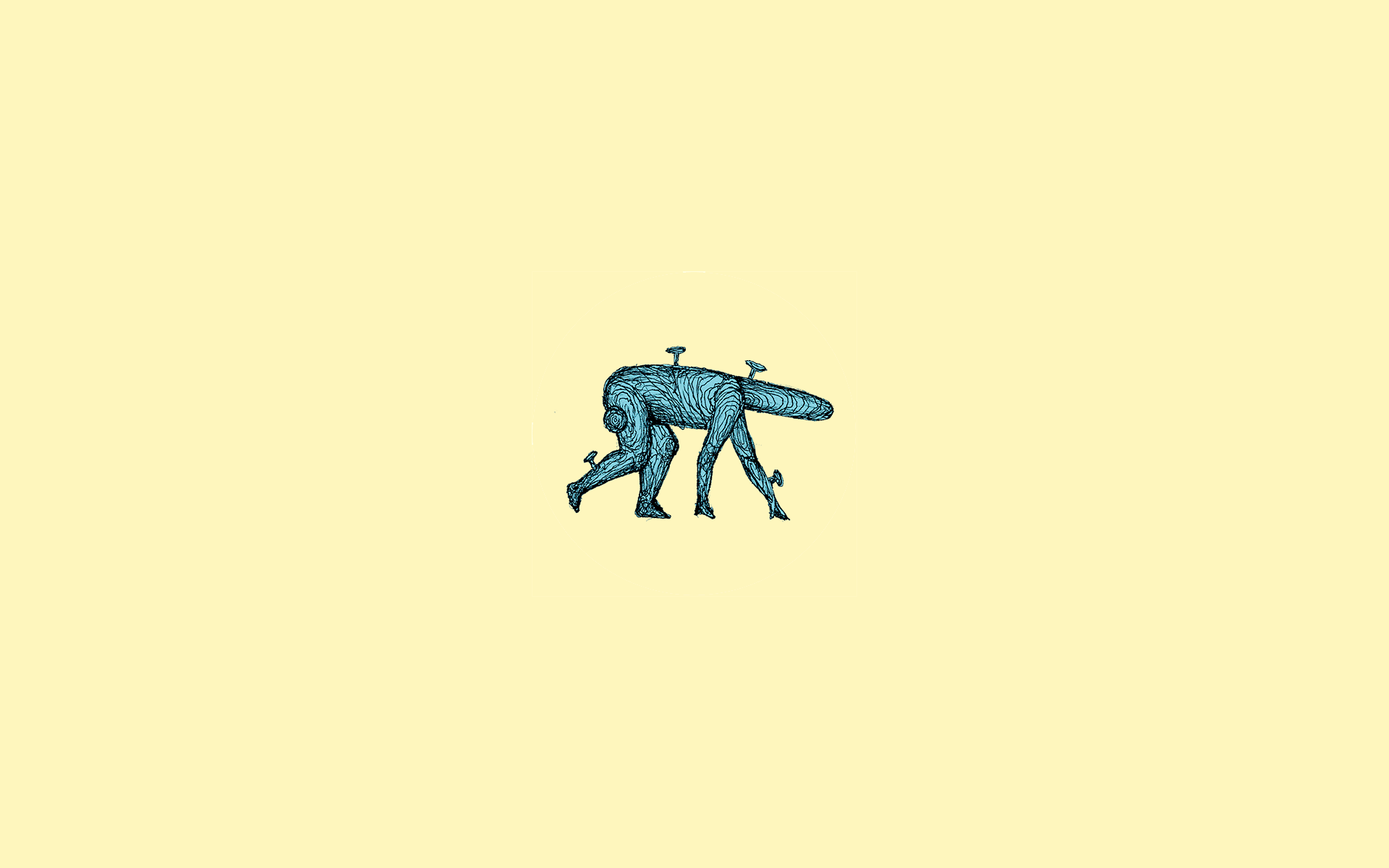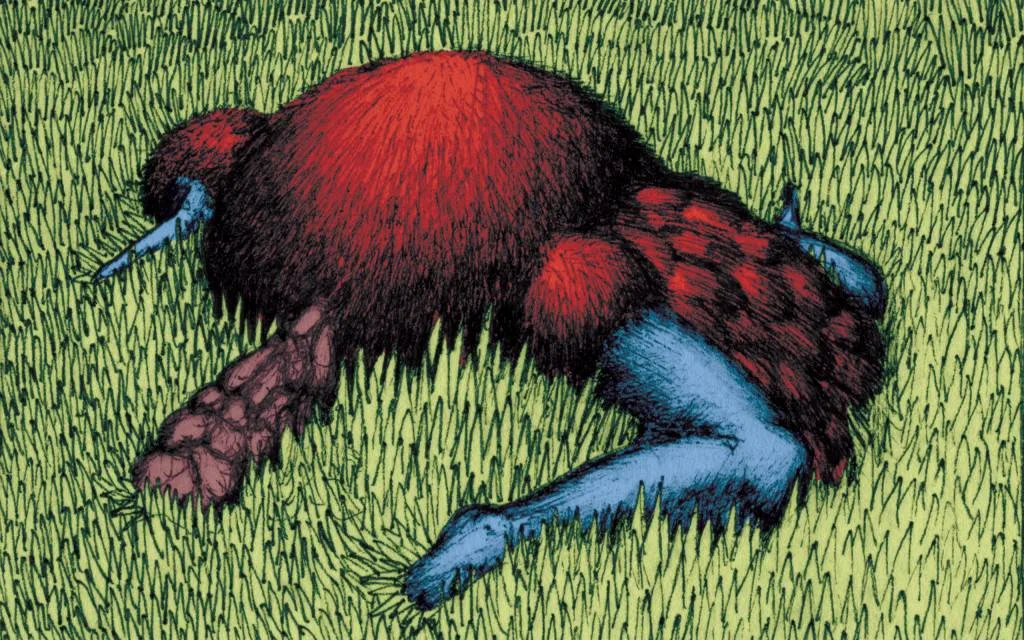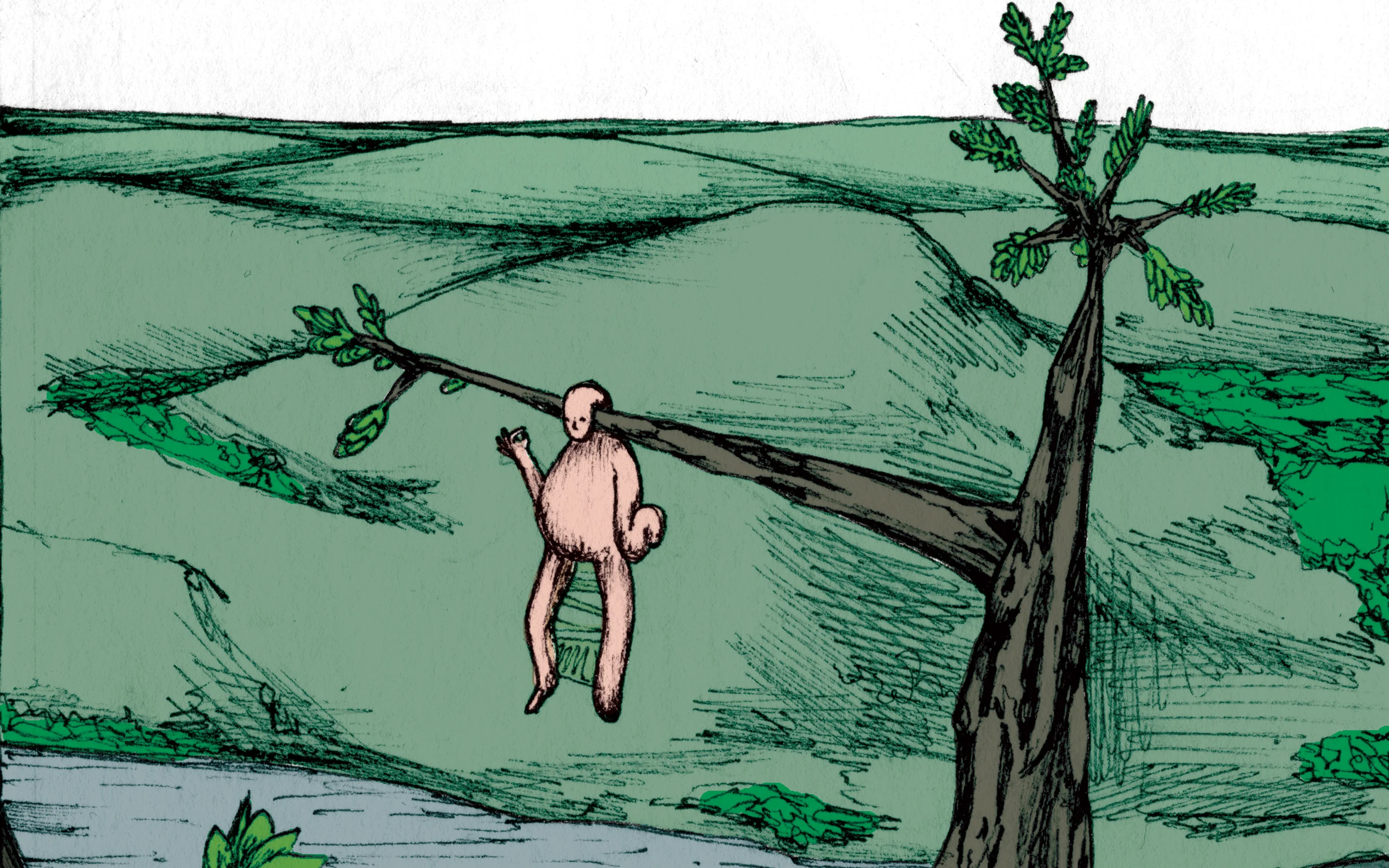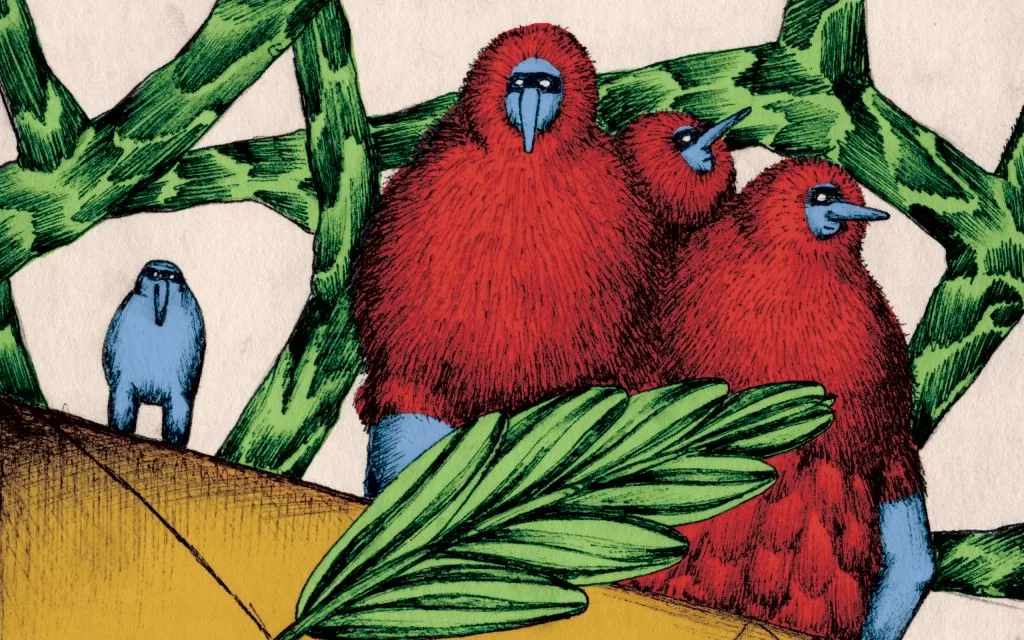
The marvellously-named Olf de Bruin describes himself as “an illustrator with a great fascination for evolution, mankind and the future.” These interests come together in his intriguing book Van Bollebast Tot Voortprinter, in which he has created six new species of human beings, evolved and adapted to suit a specific social or scientific setting. There is a lot of interest in transhumanism at the moment, and lots of designers thinking about how new technology can enhance the human condition, but Olf’s book spins out these ideas to enjoyably far-fetched extremes.
Below are a few examples of Olf’s new species, translated from the book.
Voortprinter
Men and machine. For generations they were regarded as separate entities. However, this changed when human-beings became so intelligent and advanced, they started, like horny teenagers, to experiment with creating their own offspring. Generation after generation, human characteristics were amplified and duplicated, up until the point a totally new species had emerged: the Voortprinter.
Without any fertilisation, the Voortprinter has the ability to continuously reproduce its offspring. This makes it one of the most successful transhumanists out there.

Onderwijze
If you are not strong, you need to be smart. The Onderwijze is the result of the brute forces of machine technologies. In order to stay alive, the Onderwijze is used to walking around in a ponderous state of mind.
To philosophise is his strongsuit. Once drenched with knowledge, the Onderwijze hides below the surface to think things over quietly. However, because knowledge needs to be shared, its offspring (which live above the ground) continuously call upon the Onderwijze. It’s an efficient way to stay on top of things.

Zeekopje
Whereas back in the day the ocean was a pristine force of nature, it was transformed into an enormous bowl of plastic soup shortly after the fourth Industrial Revolution. Because of this, mankind decided not to rely on the scarce fresh water still available, and instead used the plastic soup as a new source of energy.
The Zeekopje gorges on this plastic. Her two-faced face enables her to stay on track, and simultaneously stuff herself with the delicious soup.

Hangnek
Whereas men used to be active huntsmen, with each passing century they became lazier and lazier. At a certain point, even popping down to the supermarket would completely wear them out.
Nonetheless the solution to this problem was easily found: the trick was to use everything that you come across. When the Hangnek appeared, insects were in trouble. With the help of its slimy web, the Hangnek eats every fly like it’s a delicious snack, giving it the energy it needs.



